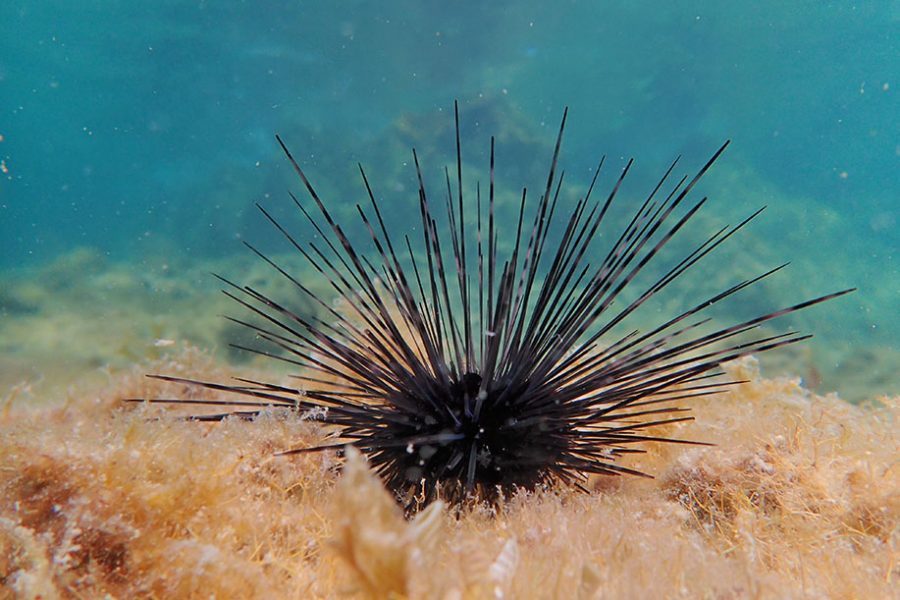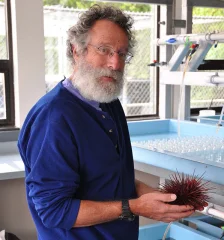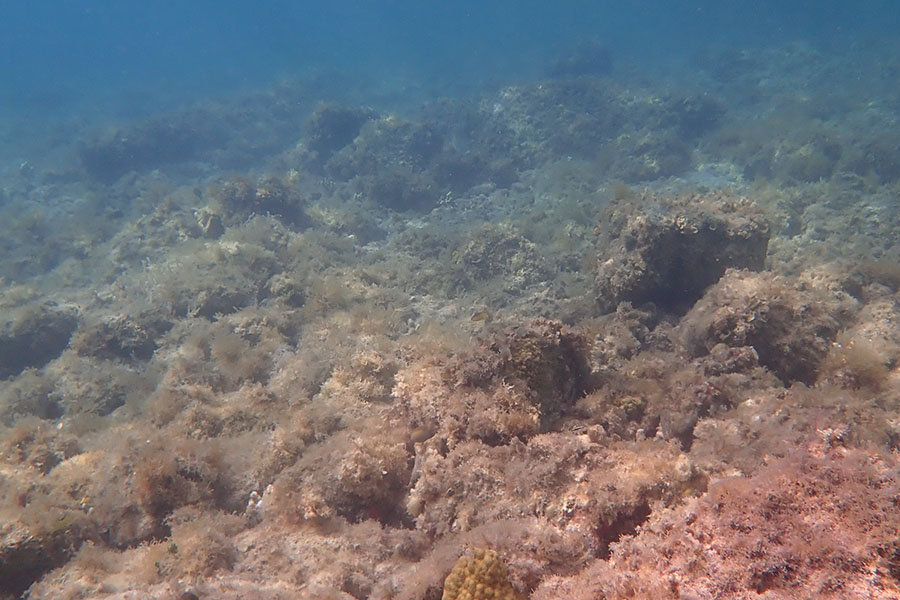American researchers find 2022 sea urchin die-offs threaten Caribbean coral reefs (again)
—via FSU
February 27, 2023

The urchin species Diadema antillarum has long been considered the most important grazer in the Caribbean, feeding on algae that would otherwise overrun the reef and make it difficult for coral to thrive. But two mortality events over the past 40 years have caused much of that urchin population to die off.
New research led by FSU Professor of Biological Science Don R. Levitan shows that the loss of these algae-free areas due to the sea urchin die-off is threatening the existence of the corals that populate Caribbean reefs.
The work, funded by the National Science Foundation, has just been published in the Proceedings of the National Academy of Sciences.
Levitan, along with collaborator Prof. Peter Edmunds at California State University Northridge, has been collecting data on D. antillarum since his first research trip to St. John, U.S. Virgin Islands, in 1983, recording population density of the species and tracking it through mass mortality events in 1983-1984 and in 2022.
“Our research provides the most complete long-term data set that covers this 40-year period and the two mortality events,” Levitan said. “Using Edmunds’ annual data on coral abundance and community structure, we saw this almost black and white image of how the reefs had changed. Because of this extensive data set, we will be able to compare the trajectory of future populations of this species and be able to compare it to the first mortality event.”

In 1983, the St. John’s shoreline was packed with a venomous spine canopy of D. antillarum, but six months later an unknown water pathogen wiped out 99 percent of the species throughout its range in the Caribbean Sea, the Gulf of Mexico and the Western Atlantic Ocean. Consequentially, Levitan observed algae concentrations increase by 3,000 percent at the research sites.
“The site went from a reef that was scrubbed clean of algae to one that was completely overgrown with algae in just six months because of the removal of one urchin species,” Levitan said. “Coral abundances decreased tremendously throughout the Caribbean as well.”
D. antillarum population densities at the surveyed sites increased 10-fold over the next eight years but did not recover further. Only small pockets of D. antillarum survived in shallow waters, grazing and providing algae-free zones for coral larvae to attach, establish themselves in the reef and reproduce. That same year, coral cover throughout the Caribbean was approaching the lowest values recorded in modern times. Urchins previously appeared at a rate of about 15 per square meter but were reduced to about 1 per meter.
In 2022, a second mass mortality event swept the U.S. Virgin Islands and the many areas of the Caribbean, reducing the already sparse D. antillarum population by an additional 98 percent.

Levitan and his team measured D. antillarum abundance and body size throughout established sites in the U.S. Virgin Islands National Park to determine patterns of individual growth rates and to identify the establishment of new coral in existing communities and estimate coral mortality. The team also examined an abundance of juvenile coral within and beyond the algal-free zones D. antillarum occupied.
Daniel Thornhill, the NSF program director of biological oceanography, praised the research team for its dedication to collecting data over such a long period of time.
“Levitan and Edmunds’ work highlights the tremendous value of long-term data and sustained, place-based research,” Thornhill said. “Nearly 40 years after the first urchin die-off, there had been hopeful pockets of urchin recovery. The recent die-off represents a major setback for both urchin populations and the prospects for Caribbean coral reef recovery.”
Levitan and his team are hoping to leverage this nearly half-century of data to gain an understanding of how these mortality events will affect D. antillarum population density in 2023 and the future • including the pace, or even the likelihood, of recovery in future years • as well as the corresponding impact of the algae-free zones on the diversity in coral species in reefs at St. John and across the Caribbean.
FSU biological science doctoral student Rachel Best also collaborated on this study.
—Dena Reddick/FSU
Reference
Don R. Levitan, Rachael M. Best, Peter J. Edmunds. Sea urchin mass mortalities 40 y apart further threaten Caribbean coral reefs. Proceedings of the National Academy of Sciences, 2023; 120 (10) DOI: 10.1073/pnas.2218901120
Capts
Don Levitan is a professor of Biological Science at Florida State University.




